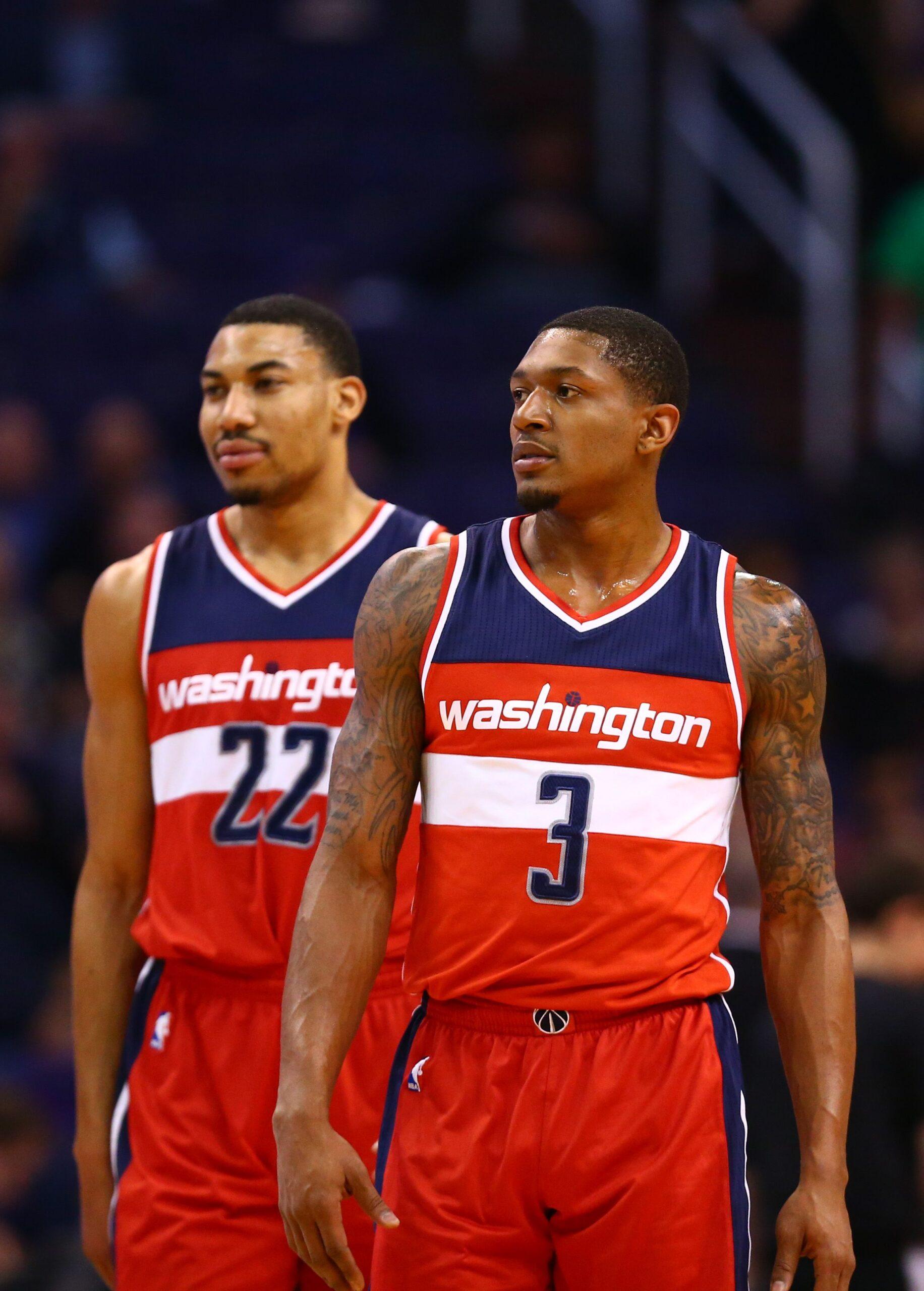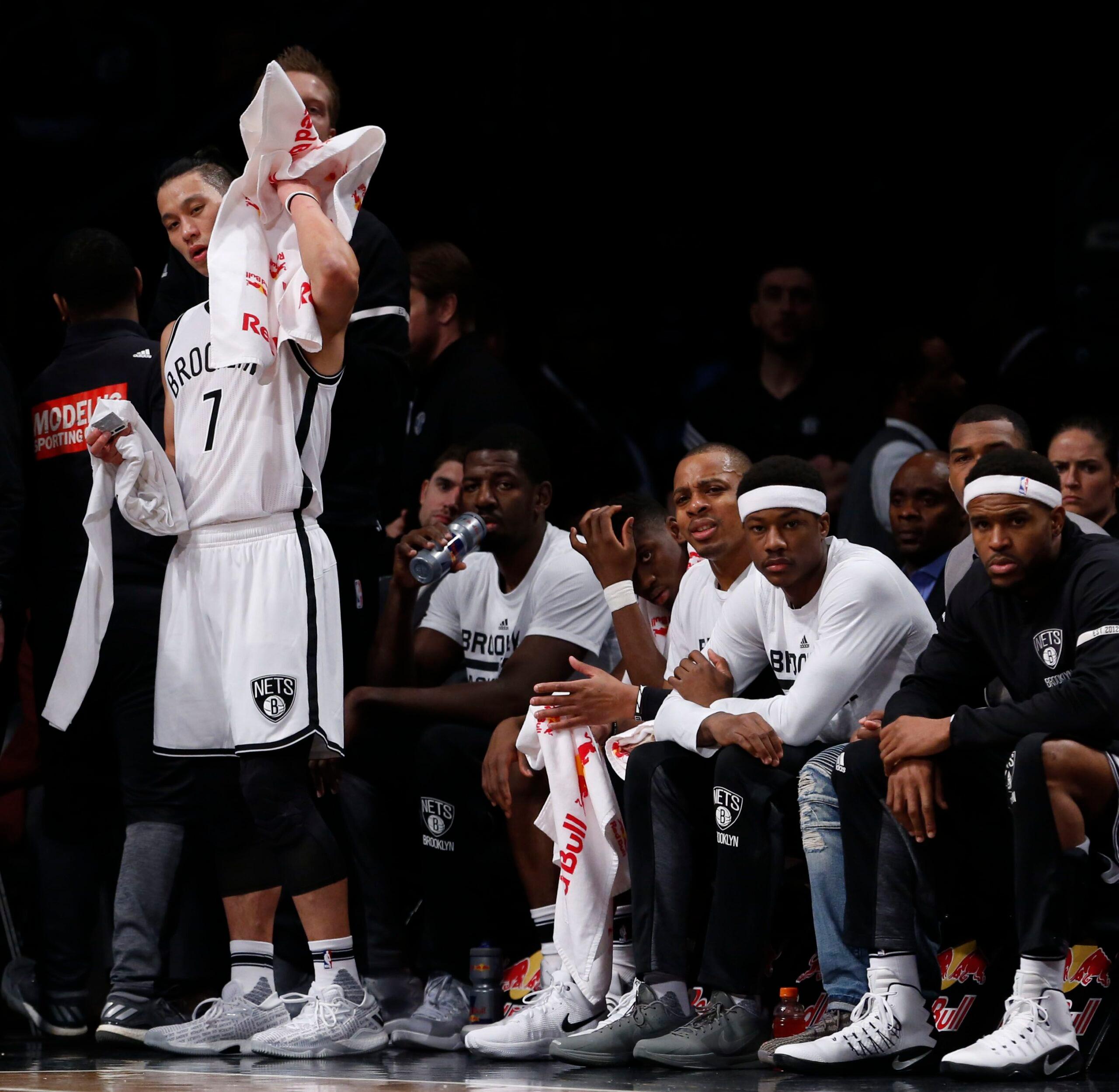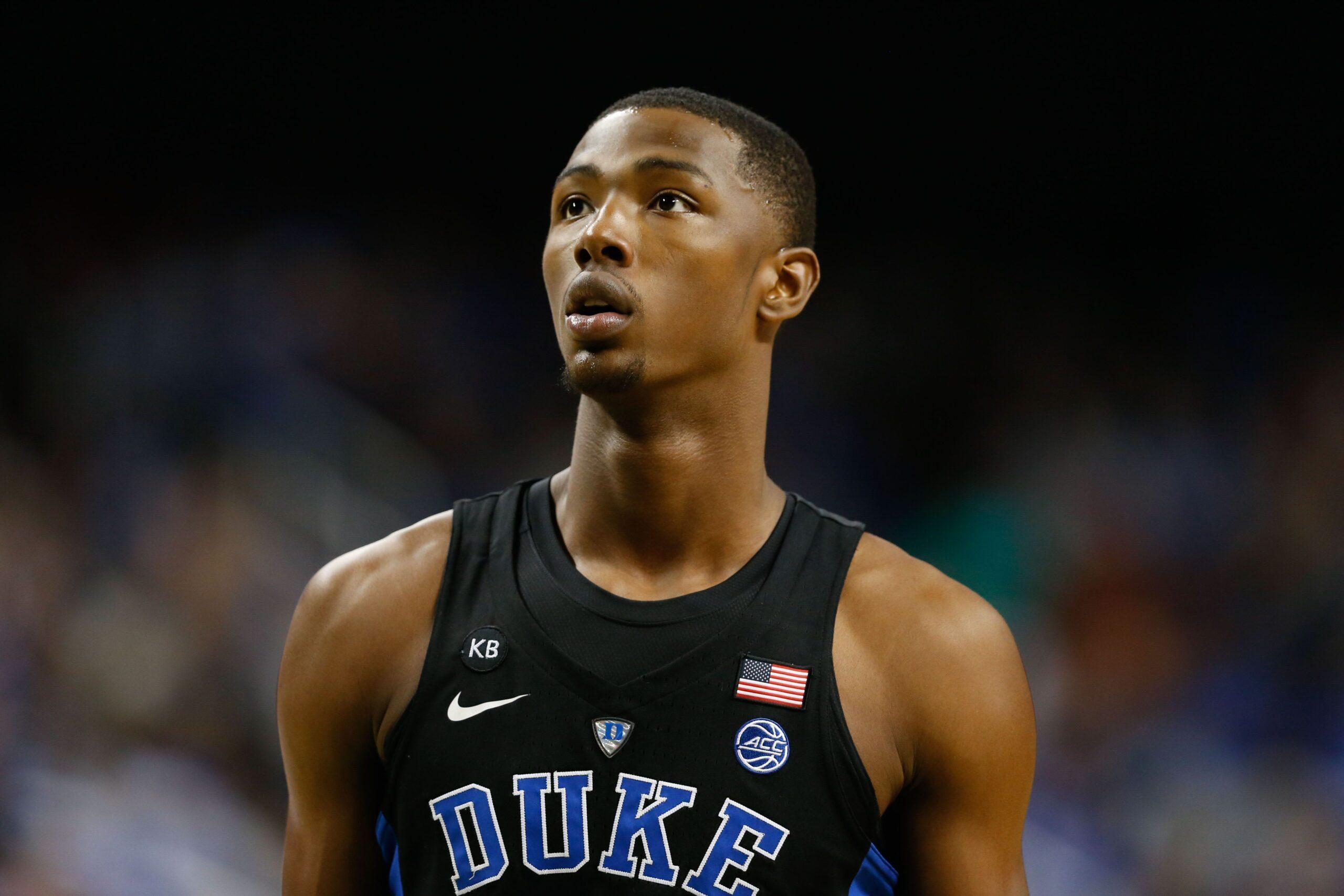The NBA might be more progressive than MLB and the NFL, but it’s still resistant to change. The gap between the league’s two conferences has been an issue for almost 20 years, and it has only gotten wider this offseason; nevertheless, even if LeBron James goes west next year, the playoff format will stay the same. People have complained about the one-and-done rule and tanking for years, and the league has done nothing to fix the underlying problem.
While there is plenty of debate about how much addressing any of these issues would improve the on-court product, most of the arguments, pro or con, are beside the point. The NBA is a business, and everything it does is based on maximizing the revenue of its 30 ownership groups. Commissioner Adam Silver will not push any proposal that would hurt their bottom line, and it wouldn’t make a difference if he did. The commissioner of the NBA has only as much power as the owners give him. There’s too much money on the line for it to be any other way.
Silver is not all-powerful, and neither was David Stern. He can’t snap his fingers and do whatever he thinks is in the best interest of the sport, and he can’t push around wealthy businessmen who have invested billions of dollars in the league. The Donald Sterling saga in 2014, which happened in Silver’s first few months on the job, made Silver appear as someone who would stand up to the owners, but forcing out Sterling was not a matter of social justice outweighing business considerations. The two were working in concert. The Clippers play in one of the biggest markets in the country; they should be one of the NBA’s flagship franchises, not a laughingstock, and they should be generating revenue that can be shared with other owners. A bad owner in Los Angeles costs his peers a lot of money. The racist rants from Sterling’s leaked phone conversations gave his fellow owners an excuse to do something (institute a lifetime ban of Sterling, fine him $2.5 million, and force him to sell the Clippers) they already wanted to do. Silver was just the tool they used to make it happen.
If Silver were in charge, the playoff format would have changed a while ago. It was one of the first things he addressed as the commissioner, saying the two-conference structure was no longer necessary now that NBA teams fly charter instead of commercial. A year later, he went on record saying that the conference imbalance needed to be fixed. He’s still talking about it in 2017, but he has conceded that it’s no longer “at the top of the agenda,” raising many of the same travel issues he had previously dismissed. Silver has also said that taking the top 16 teams into the playoffs, regardless of conference, would be unfair because the league doesn’t have a balanced schedule. This, of course, ignores that the current system is even more unfair, since the Western teams play significantly tougher schedules than those in the East, yet, for the most part, still have better records every year. Silver, like any good corporate lawyer, is paid a lot of money to come up with reasons why his clients can’t do things that wouldn’t be in their best interest financially.

The real issue, as Tim Bontemps outlined in a Washington Post article a few weeks ago, is that it takes a two-thirds majority vote from the league’s owners to make any changes to the playoff format. There are plenty of owners in the West who want to do it, but why would their counterparts in the East vote for something that’s not in the best interest of their franchises? There’s a lot of money at stake. Ted Leonsis just handed out more than $400 million in contract extensions to John Wall, Bradley Beal, and Otto Porter Jr. in the last two years, and he’s still waiting for his first trip to the the Eastern Conference finals. If the Raptors knew the system was changing, they probably would have blown up their team and started over, not given Kyle Lowry and Serge Ibaka deals worth over $160 million this offseason. Every team in the East benefits from the current setup. Since the turn of the millennium, eight of the fifteen teams in the conference have made at least one appearance in the Finals.
The benefits of a deep playoff run go well beyond the extra revenue from tickets and merchandise sales. It boosts the image of the franchise, creates lifelong fans, and generates the goodwill necessary to gouge cities for sweetheart arena deals worth hundreds of millions of dollars. The money created from playoff appearances is a zero-sum game. If one team is making more because the playoff format is altered, another is making less. Owners respond to naked self-interest, and the only way they would agree to a change is if they thought it would make them more money than they could get currently. The opportunity cost of their teams getting knocked out of the playoffs earlier than they would otherwise is mind-boggling. Dan Gilbert paid $375 million to buy the Cavs in 2005.In February, Forbes had the franchise's value estimated at $1.2 billion; it has likely grown since then, after their fourth Final trip in the last 11 years back in June.
Reformers point out that changing the playoff format would put more Eastern teams in the lottery, accelerating their rebuilding process and helping them be more competitive in the long run. However, a lack of high draft picks is not why Eastern teams have struggled. The East has made 17 of the last 24 top-three picks. There would be some difference in draft positioning in a league without conferences: In 2015 the Thunder won 45 games and had the no. 14 pick, while the Celtics won 40 games and had the no. 16 pick. But jumping a few spots in the middle of the first round isn’t nearly enough to justify giving up an easier path to the playoffs, as well as a better chance of advancing.
The NBA’s economic system isn’t designed to reward well-run franchises. The goal is to protect mediocre ones. The clearest example is the draft itself. The worst teams in the league are given the chance to pick from the best young players in the world, with restricted free agency all but ensuring they will stay with the teams that draft them for their first nine seasons in the league. Since basketball is such a star-driven sport and most franchises have little chance of attracting the best players in free agency, there’s a clear incentive for tanking. It has always been a part of the NBA. There was just a gentleman’s agreement not to do it blatantly, which Sam Hinkie broke. When Silver criticizes teams for tanking, it’s usually for talking about it openly.
The league could fix the issue in a second if they wanted to. In 2014, when the uproar about Hinkie and the Process was at its highest, the owners voted down a proposal that would make tanking significantly less attractive. Instead of a 25 percent chance of winning the lottery, the team with the worst record in the NBA would have only a 12 percent chance, the same as the teams with the three next-worst records. The initial assumption, at least among front-office executives, was that the proposal would pass easily, but owners from small-market teams raised concerns about unintended consequences at the last minute. It was widely thought at the time that the vote would be taken up again after teams had more time to study it, but it never was.
The problem is there’s no way to distinguish between a team trying to lose on purpose and one that can’t get out of its own way. The 76ers finished with the worst record in the league only once in the last four years. The Wolves haven’t made the playoffs since 2004, and the main reason why that’s likely to change is because they won the lottery in 2015 and took Karl-Anthony Towns with the no. 1 overall pick. The Kings haven’t been to the playoffs since 2006, in large part because they haven’t been lucky with the ping-pong balls and gotten a top-three pick in the years since. There have been plenty of good NBA players available where they were picking; they just weren’t able to nail enough of their selections. There are a lot of poorly run NBA teams who would be wandering in the wilderness forever if they weren’t gifted with high draft picks.

A franchise needs to sell hope on a year-to-year basis. If a team wins fewer than 20 games in a season, they aren’t going to attract any good free agents, and they almost certainly don’t have many players that other teams would want in trades. The only way they can get fans into the arena the following season is with a high draft pick, so a system that makes it harder for them to get those picks is going to create more hopelessness around the league. No one has gone to Nets games in years because they’ve been a terrible team without any of their draft picks and are just now starting to pick themselves off the floor, thanks to an aggressive new front office. Most owners want a guarantee their teams will be better next season without doing much to facilitate the process. They want a system that props up their teams as much as possible. A smart business owner doesn’t want to be involved in a free market where the margins are nonexistent and only the most well-run organizations survive. They want to be in a heavily regulated market, one where even the worst organizations make money. People worth billions of dollars, for the most part, are cautious with their money. The NBA is designed to be a safe investment for them.
The desire to minimize risk is why the one-and-done rule for college athletes exists in the first place. The NBA wanted its teams to have as many chances as possible to evaluate potential high draft picks. Scouting is difficult in the best of circumstances, and evaluating teenagers who can dominate other high schoolers based purely on size and athleticism is even harder. College basketball is hardly an efficient sorting mechanism, but it does make it easier to divide the wheat from the chaff among the top prospects in the country. As far as the NBA is concerned, it doesn’t matter if players develop in the NCAA, or if the rule improves the college game. The morality of not letting 18-year olds make a living playing basketball is irrelevant. As Stern told reporters in 2012, it’s just business.
For the most part, the players ranked at the top of their high school class by the recruiting services are the ones who end up being taken at the top of the lottery the following year. Of the consensus top-10 players in the class of 2016, eight were lottery picks in the 2017 draft. However, there are still plenty of false positives, like the Harrison twins. Andrew and Aaron Harrison were two of the most dominant AAU guards of the last generation, and they would likely have been lottery picks had they been allowed to declare for the draft out of high school. Once they got to Kentucky and were forced to compete against NCAA players, though, their lack of high-level athleticism and poor feel for the game were exposed. After two seasons in college, Andrew was taken in the second round and Aaron went undrafted. Neither has done much in the NBA so far: Aaron is a career 21.7 percent shooter, while Andrew has shot 32.5 percent from the field. It’s not about whether the top prospects get better in college. The NBA just wants to see if they get worse.

The people who are hurt by the one-and-done rule are guys like the Harrisons and Harry Giles, who went under the knife three times before ever playing for Duke. In theory, the league should want the best young players in the world to get into more comprehensive NBA medical programs as soon as possible. However, it’s not like the world is running out of talented prospects, so why assume the risk? There’s always a new batch next year. NBA owners want to keep their profits; they don’t want to reinvest them back into the sport. That’s why shoe companies like Nike, Adidas, and Under Armour fund the youth basketball infrastructure in the U.S. Real Madrid signed Luka Doncic, one of the front-runners to be the no. 1 overall pick in 2018, to a pro contract at 13. MLS franchises are setting up youth academies all over the country. There’s nothing stopping the NBA from doing the same.
But most of the proposals to change the one-and-done rule have not gained traction because they don’t address the problem the NBA had with the old system. Doing something like the MLB draft, where high school seniors can either go pro immediately or stay in college for three seasons, would be better for the NCAA, but plenty of high school baseball players end up flaming out in the minor leagues. That’s a risk NBA teams don’t want to take. Nor do they care about waiting an extra year to draft the next LeBron, since that’s one fewer year they have to pay him on the back end of his career. By the time most stars reach unrestricted free agency, they have been in the league for at least eight or nine seasons. They have more negotiating power if they hit the market at 26 or 27 instead of 28 or 29, and that goes double if they are signing their fourth contract in their early 30s instead of their mid-30s.
The NBA teams who would benefit the most from the one-and-done rule being eliminated are the ones with superior scouting departments, as well as training and development staffs. In other words, the teams already doing well. They don’t have much incentive to change the system, while the ones at the bottom will do everything to prevent their jobs from becoming harder. The league wants more parity because it makes it easier for all of its 30 teams to turn a profit, not less. That's why most of the changes in the last few collective bargaining agreements have favored the owners with regards to revenue splits. The owners have all the leverage, and they have an easier time taking money from someone else than dividing it up among themselves.
There are plenty of cracks in the NBA’s economic model, and they will likely get deeper in the years to come. As Mark Cuban pointed out when talking about why the conference system should be changed, there’s less incentive for teams in the East to get better because the bar for making the playoffs and winning a series or two is much lower. Stern always said the balance of power between the conferences was cyclical, but the last two generations of players have not been able to change the underlying dynamic, and there’s no guarantee the next one does either. As long as the owners in the East keep making money off their teams, they have no reason to change the way they are run.
While some owners might be willing to give up money in the short-term to make more down the road, few people in any walk of life have that type of vision. The more likely scenario is that the fear of losing money makes them more willing to embrace change. That’s why the conference imbalance is likely to be addressed first, since a series of lackluster Finals could hurt TV ratings enough to impact the league’s bargaining position when its TV contract expires in 2025. The costs of tanking and the one-and-done rule, on the other hand, are harder to quantify. The NBA isn’t Lake Wobegon: Every team can’t be above average. There will always be bad ones, no matter how the system is set up, and the next general manager who trusts the process will probably be more subtle about it than Hinkie. And while the league’s development pipeline could be streamlined, as long as great basketball players keep popping up every year, the NBA probably won’t do much beyond spending a little money on improving international tournaments for young players.
Improving the league starts with understanding the mechanisms that make change possible. Reformers have to see the world for how it is and not how they would like it to be. Instead of identifying a problem and looking for a solution, start with a solution and look for a problem it can solve. The NBA has only one problem that needs to be solved every time a new collective bargaining agreement is negotiated: A majority of its owners are not making as much money as they can. Any proposed solution, no matter how well-intentioned or how much it would improve the league, is dead on arrival if it doesn’t improve their cash flow. The owners didn’t get to where they are by giving away money out of the kindness of their hearts, and they could always use more. Don’t listen to what Adam Silver says. Closely examine the wallets of the guys he works for.
